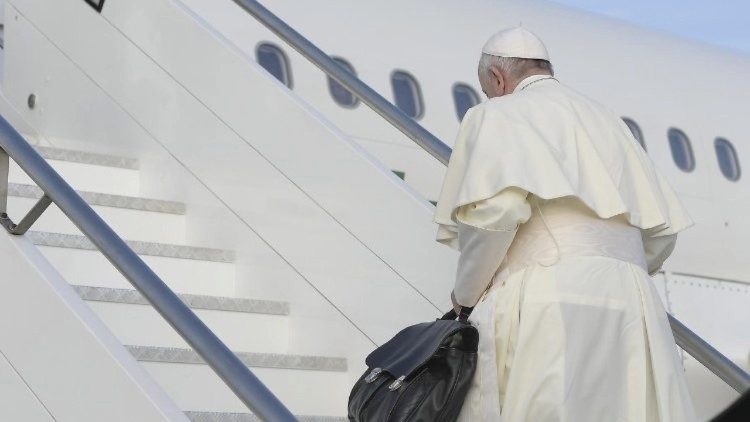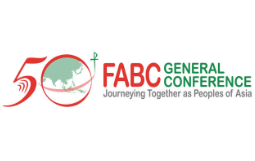Pope Francis the pilgrim: Taking the Lord’s closeness to every corner of earth
In the 12 years of his pontificate, Pope Francis visited 68 countries giving life to a tireless mission to take the Word of God and the comfort of His love to the whole human family.
Apr 22, 2025

By Linda Bordoni
From Rio to Ajaccio, circumnavigating the globe dozens of times if you consider the sheer number of kilometres travelled, Pope Francis’ 47 Apostolic Visits abroad took him and his message of closeness to every continent and almost every corner of the earth.
Throughout the years and journeys, it became increasingly clear that he set the tone immediately when he was photographed upon his departure to Brazil in 2013, carrying his little black bag as he climbed the steps into the aircraft.
Then, during the flight, he walked up and down the aisles, personally greeting and chatting to the journalists on board, connecting with them and building down-to-earth relationships that stood the test of time.
Once landed, he refused to use an armoured vehicle, preferring to be driven in a simple car or in an open-air jeep that would enable him - again - to connect with the people, share their lives and their feelings.
It is also symbolic that Pope Francis’ first foreign trip was not a foreign visit at all, but to Lampedusa, an island in southern Italy, the port of entry to Europe for hundreds of thousands of men, women and children fleeing violence, climate change and poverty.
In choosing Lampedusa as his first visit, the Pope immediately highlighted the priority he would give to the poor and especially to migrants seeking survival, safety, a future.
From a wider perspective, it was also a symbolic embrace of the peripheries, a cornerstone of his magisterium, an unfaltering call to heed the cry of the poor, the marginalized, the weak.
Pope Francis’s travels—averaging about four journeys a year—took him to 68 different countries, each of them offering him the opportunity to call for justice, peace, inclusion and love for the entire human family.
Although his body began to let him down, obliging him to accept a wheelchair and even forcing him to cancel a visit or two, his call never weakened.
As per protocol, authorities and political leaders were always the first to receive his address at the start of an apostolic visit; according to the context and problematics of the country in question, they were never spared direct words of criticism and even condemnation as he called them to account and urged them to foster the common good.
For the faithful, on the other hand, and for the religious men and women dedicated to charity and evangelization, his words were always words of closeness, sharing and gratitude.
As soon as the pomp and circumstance of the official welcome ceremonies died down, a certain sternness would fade, giving way to joy, as he received the warmest of welcomes, the most humble of gifts, and the wonderous gazes of those who couldn’t believe they were actually in his presence.
Amid spreading secularization in Europe and the shadows cast on the Church by clerical sex abuse scandals, Pope Francis chose to visit Belgium.
In the heart of a continent increasingly darkened by division, populism and even war, he asked authorities to “build bridges to peace” and never shied away from difficult discussions regarding gender, abuse and abortion.
This too was a “periphery” of sorts in the rich part of the world, just as needy – according to the Argentine Pope – of closeness, support and reconciliation, as well as the presence of a loving shepherd, heart always open to all and to the guidance of the Holy Spirit.
Many of Pope Francis’ visits were undertaken as “pilgrimages of peace and reconciliation” in an open invitation to politicians to overcome partisan interests and push forward processes for the common good of their people.
His visits to Colombia, South Sudan, Iraq and Canada spring to mind. But most of all, he crossed the world to show even the smallest and weakest flock - like the 1,500-strong community of Catholics in Mongolia – that he cared about them, and that like Jesus, he had chosen to walk on the periphery.
His love, compassion and support for the faithful never failed as he spent hours under the gruelling African sun, in the oxygen-poor altitudes of Bolivia or defying an impending typhoon in the Philippines.
When thousands of poor indigenous people – from hundreds of different tribes in Papua New Guinea– trekked for days through dangerous forests or crossed perilous waters to welcome him to their distant land, bedecked in nature’s most brilliant colours and costumes, Pope Francis urged them to choose harmony over division, and then thanked them for their joy, for how they shared the beauty of a country “where the ocean meets the sky, where dreams are born, and challenges arise.”
One visit, which we were all waiting for but never happened, was the one to Argentina, Pope Francis’ home country to which he never returned after travelling to Rome for that fateful Conclave in March 2013.
The truth is, perhaps, he was at home wherever he went, every person was his brother and sister.--Vatican News







Total Comments:0